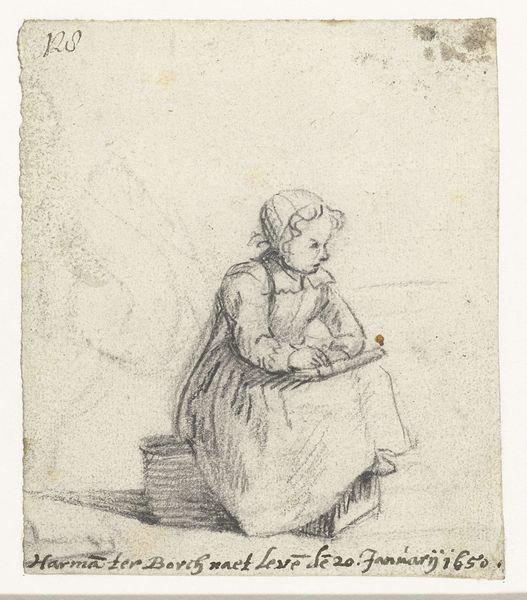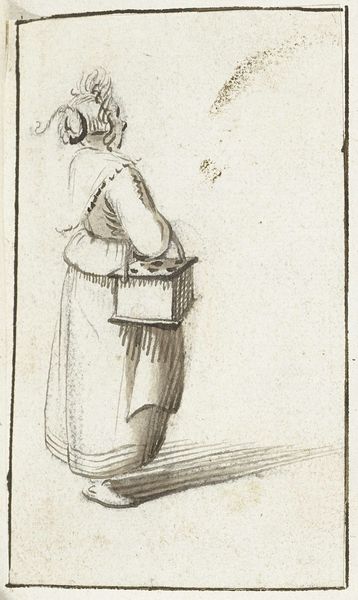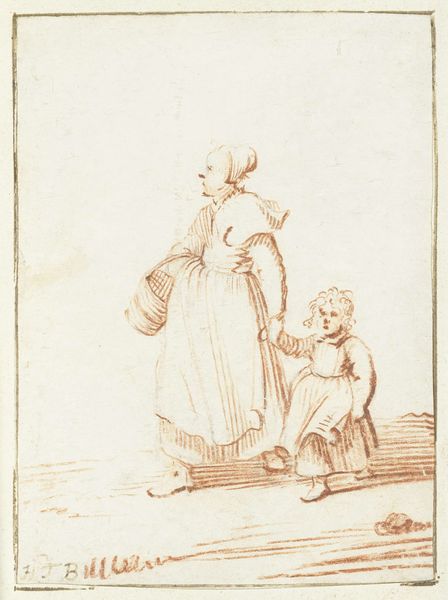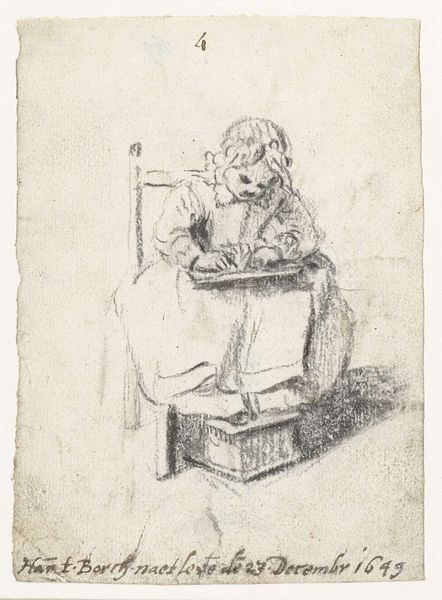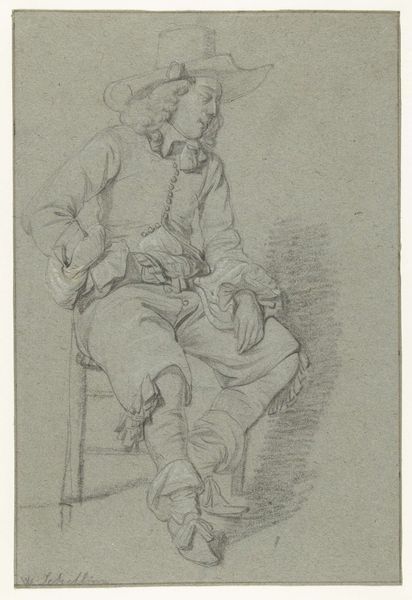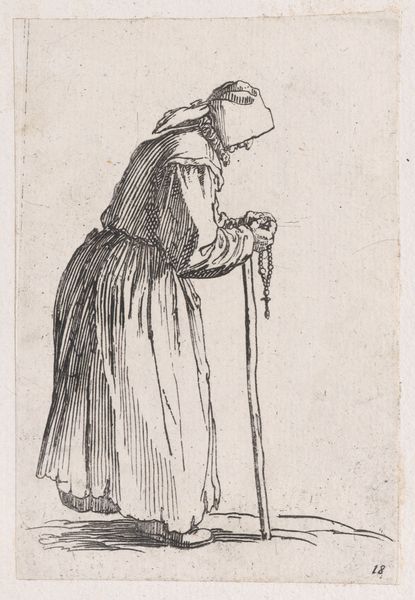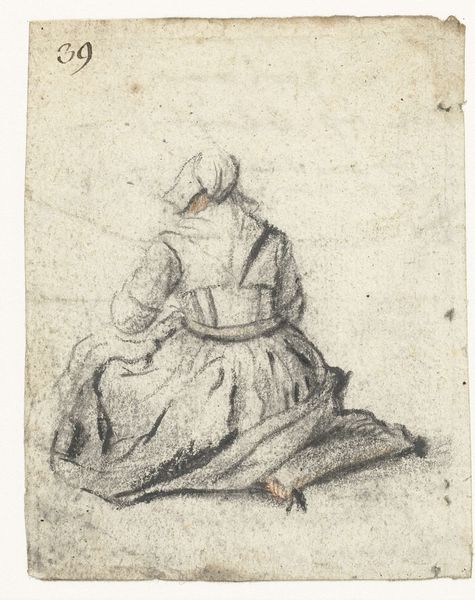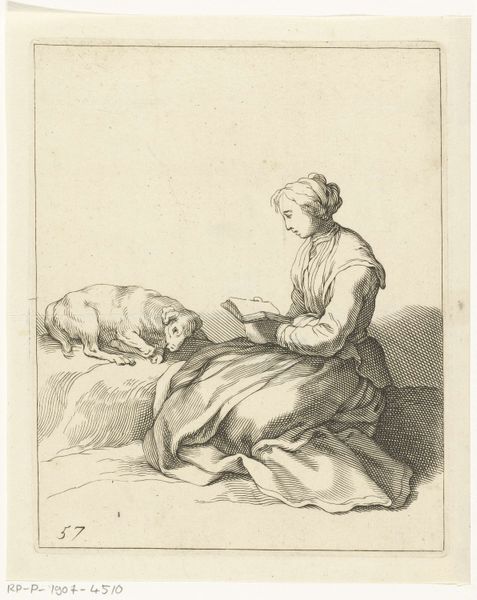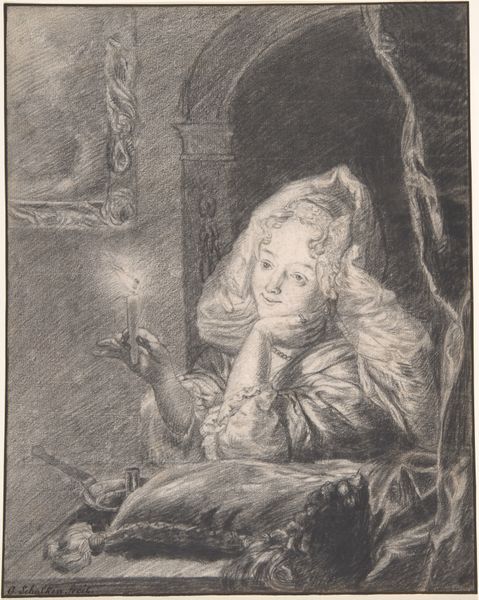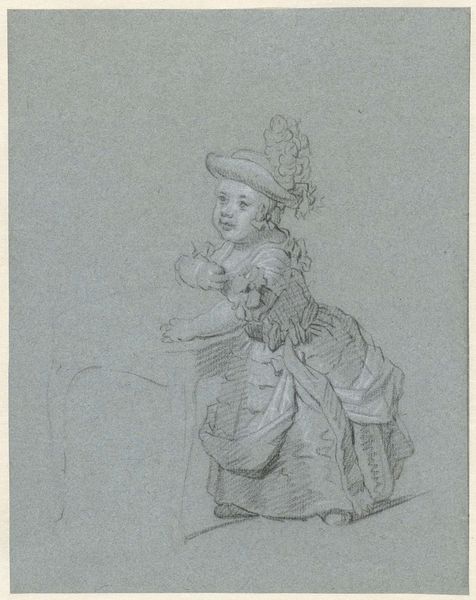
drawing, pencil
#
portrait
#
drawing
#
dutch-golden-age
#
sketch book
#
personal sketchbook
#
pencil
#
genre-painting
Dimensions: height 138 mm, width 105 mm
Copyright: Rijks Museum: Open Domain
Editor: So, here we have "Naaiend Meisje, zittend naast haar pop," or "Sewing Girl, Sitting Next to her Doll," a pencil drawing by Harmen ter Borch, created sometime between 1648 and 1677. It’s currently held at the Rijksmuseum. What strikes me is how immediate and personal this feels. It's like a candid snapshot. What stands out to you? Curator: It's intriguing to consider this drawing through a materialist lens. Look closely at the tools. We see the girl engaged in the labor of needlework and the simple materials, pencil on paper. This wasn't high art intended for the wealthy elite; rather, the humble medium suggests a more intimate, perhaps even pedagogical, purpose. Consider the significance of needlework itself in 17th-century Dutch society. It wasn't just a skill, but a symbol of domesticity and a form of female labor. Do you think the artist is also subtly commenting on class? Editor: That's an interesting point. I hadn't really considered the socio-economic aspect so much, focusing instead on the interaction between the girl and her doll. I mean, could this be considered more as craft than capital-A art? Curator: Precisely! By depicting everyday life using such a seemingly utilitarian material as pencil, ter Borch challenges those very categories. Where do we draw the line between art and craft, especially when it comes to depictions of female labor within the domestic sphere? What's fascinating is how he elevates the mundane through close observation and skilled draftsmanship. Notice the rendering of her dress. Editor: Yes, it's quite detailed considering it's "just" a pencil drawing! The folds are all meticulously captured. I hadn’t considered the material commentary before, but seeing it as a depiction of labor, both in the image and the creation, shifts my understanding quite a bit. Curator: Exactly! This examination pushes us to reconsider art historical value, the labor involved in artistic creation, and the socioeconomic context. Editor: I appreciate how your perspective connects the materials, the process, and the historical context into one cohesive idea. I will definitely view art differently.
Comments
No comments
Be the first to comment and join the conversation on the ultimate creative platform.

